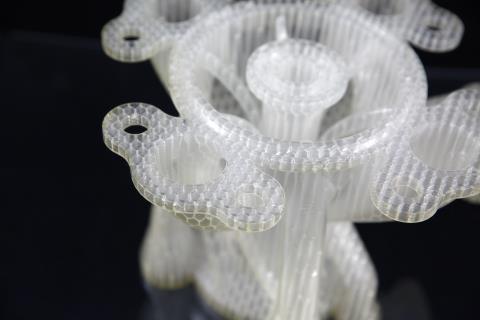One of the main, overarching advantages of 3D-printing, or additive manufacturing, technology is its versatility in applications, materials and output. To help accommodate that versatility, several different additive manufacturing technologies exist.
The following are among the 3D printing technologies that use different materials.
- Selective Laser Sintering (SLS) – Prints with plastics and polymers
- Direct Metal Laser Sintering (DMLS) – Prints with a variety of metals and alloys, including stainless steel, titanium and aluminum
- Multi-Jet Fusion (MJF) – Prints with nylon and thermoplastics
In addition to different 3D printing technologies, there are a wide variety of 3D printing techniques. Some 3D printers precisely deposit material until the object is finished. Others fuse or melt material in a detailed pattern within a layer of the print material.
Powder bed fusion is one of those techniques.
How Powder Bed Fusion Works
Regardless of the additive manufacturing technology, the first step in all powder bed fusion (PBF) processes is the spreading of the print material across a build platform, over the previously built layer.
- Spread Material Across Build Platform – Regardless of the material, it is typically spread across the entire build platform with a roller to a thickness of 0.1 mm.
- Material is Fused in a Pattern – Using an inkjet, laser or electron beam, the material is fused according to the pattern required for the particular layer.
- A New Layer is Spread – A new layer of materials is spread over the previous layer, including the fused pattern in the previous layer.
- Each Layer is Added and Fused – In addition to fusing each layer in its specific pattern, the pattern is fused to the previous layers.
- Excess Material – Any material that is not fused remains in the build chamber until the part or product is finished.
- Finished Build – When the 3D printing process is complete, the part is removed from the build chamber, cleaned and finished as required.
Advantages of Powder Bed Fusion
- Wide Range of Material Options – Considering the different additive manufacturing technologies that use PBF, objects can be made from plastics, metals and alloys.
- Materials Recycling – The Materials not fused in the PBF process can be used in subsequent printing applications.
- No Support Required – Some 3D printing processes require support to be used to keep the object in place as it is built. The extra material that is rolled on during the PBF process acts as “built-in” support for the object.
To learn more about selective laser sintering, check out our article “How Does Selective Laser Sintering Work?”.
